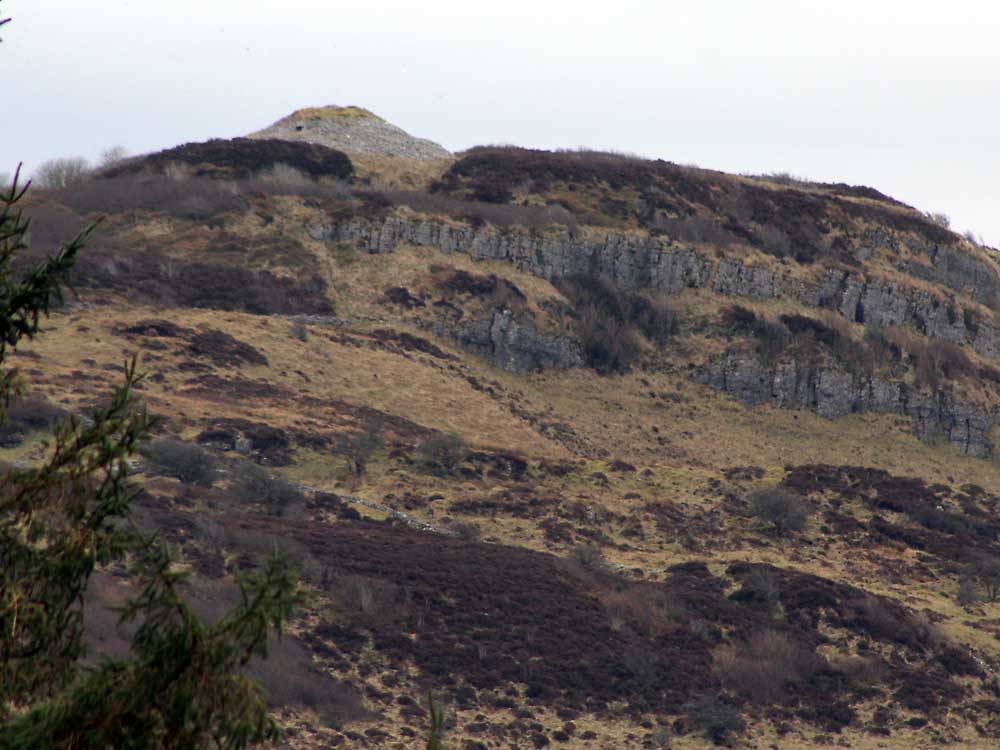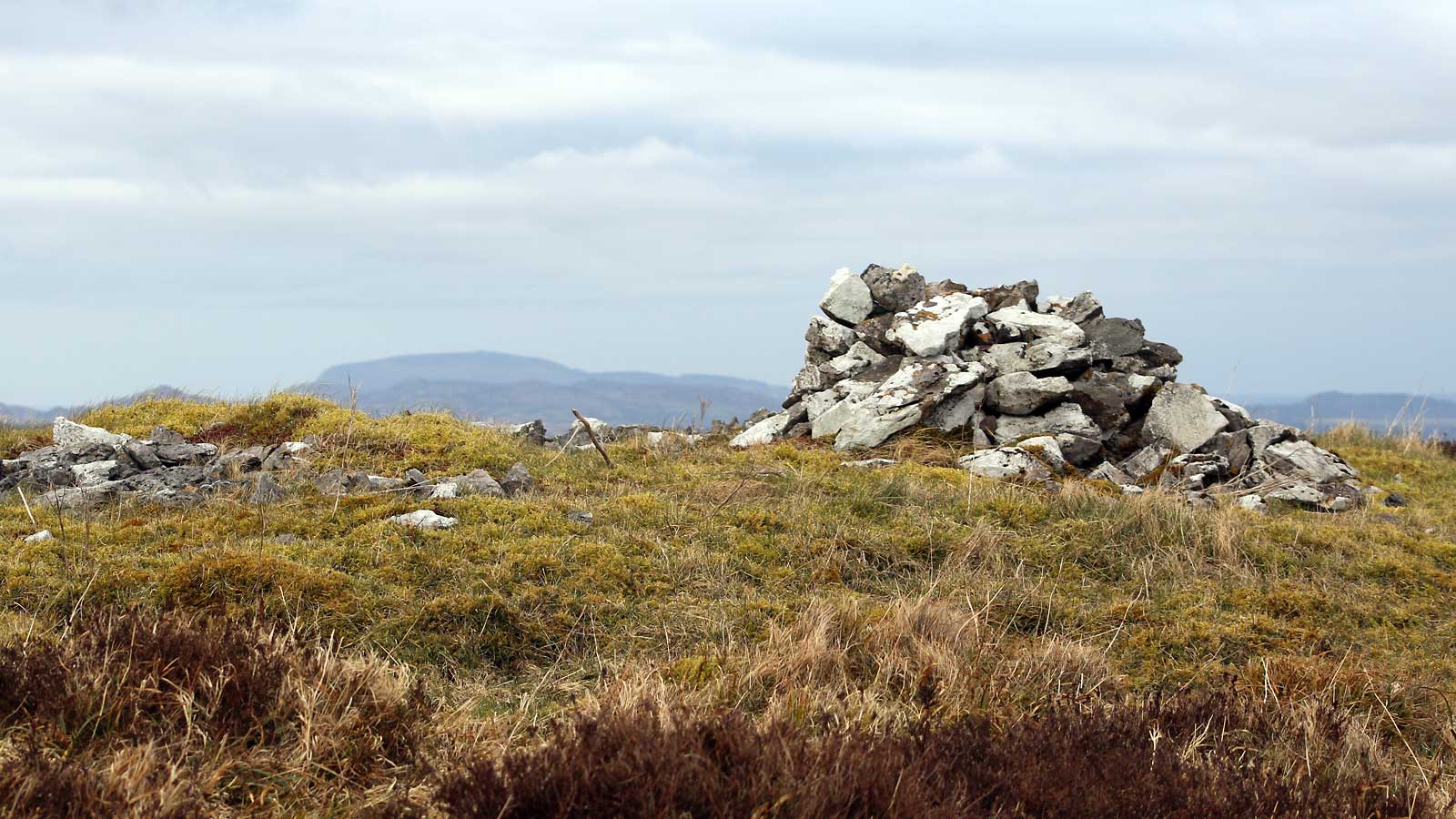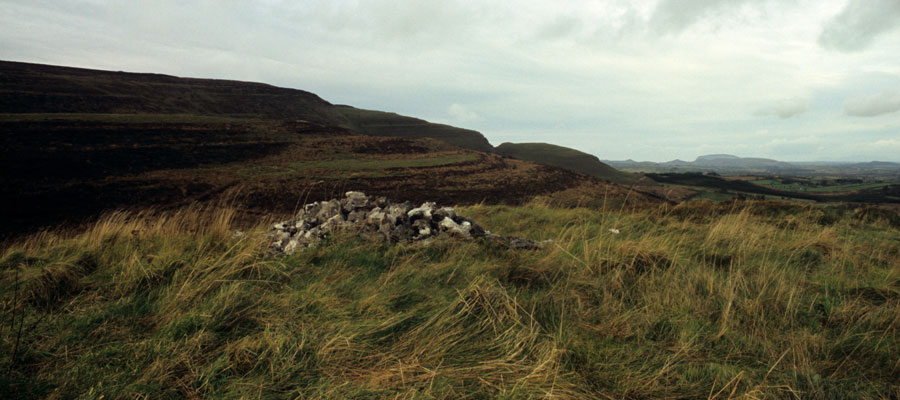Threen Cairn
Threen cairn occupies the small ridge-summit 230 meters to the west of Treanmacmurtagh cairn, the two monuments being divided by a small but very steep valley. Although the elevation at Threen (220 meters above sea level) is slightly lower than Trenanmcurtagh cairn (245 meters above sea level), the views are equally spectacular and dramatic, particularly to Sheecor, Carnanweeleen, Kesh Cairn and Treanmor.

This monument might be described as a tertre, a circular platform with a central cist like Sheecor cairn, Cairn M and Cairn N, and those found at Carrowmore to the north. Threen cairn is a low stone platform about nine meters in diameter and one meter high, and appears to have kerbstones running about the base. A small pile of stones, locally known as a Pinnacle, indicates that this cairn was used as a triangulation point during the Ordinance Survey of Ireland in 1837.
A neolithic cist like a small open passage opens to the west and seems to be oriented to Kesh cairn, just visible on the large flat summit of Kesh Corran. The cist is well defined by two parallel slabs, and may be a later Bronze age insertion into the earlier monument, like those found at Treanmacmurtagh and Cairn B.

Exposed in the top of a cairn (SL040-015). The remains consist of two opposed stones (Length about 1 meter) 0.5 meters apart and aligned east to west. Immediately to south another stone, possibly displaced, is partly exposed.
These low platform monuments seem to represent the earliest phase of the Irish passage-grave tradition which had arrived in Sligo with neolithic cattle-farmers by 4,150 BC when the causewayed enclosure at Magheraboy was constructed. The forty or so early passage-graves at Carrowmore are all tertre forms of the monument: a free-standing chamber at the centre of a raised circular platform. The focal monument at Listoghil began as a super tertre, where the chamber was oruginally free-standing before later evolving into a cairn.
Similar types of monument are found in the Carnac area of Brittany dating to a thousand years before the establishment of Carrowkeel and Carrowmore. It seems likely that the more developed monuments at Carrowkeel went through this phase.

None of these monuments around Lough na Leibe have been excavated except for Treanmacmurtagh cairn which was explored by Etienne Rynne in 1969.


